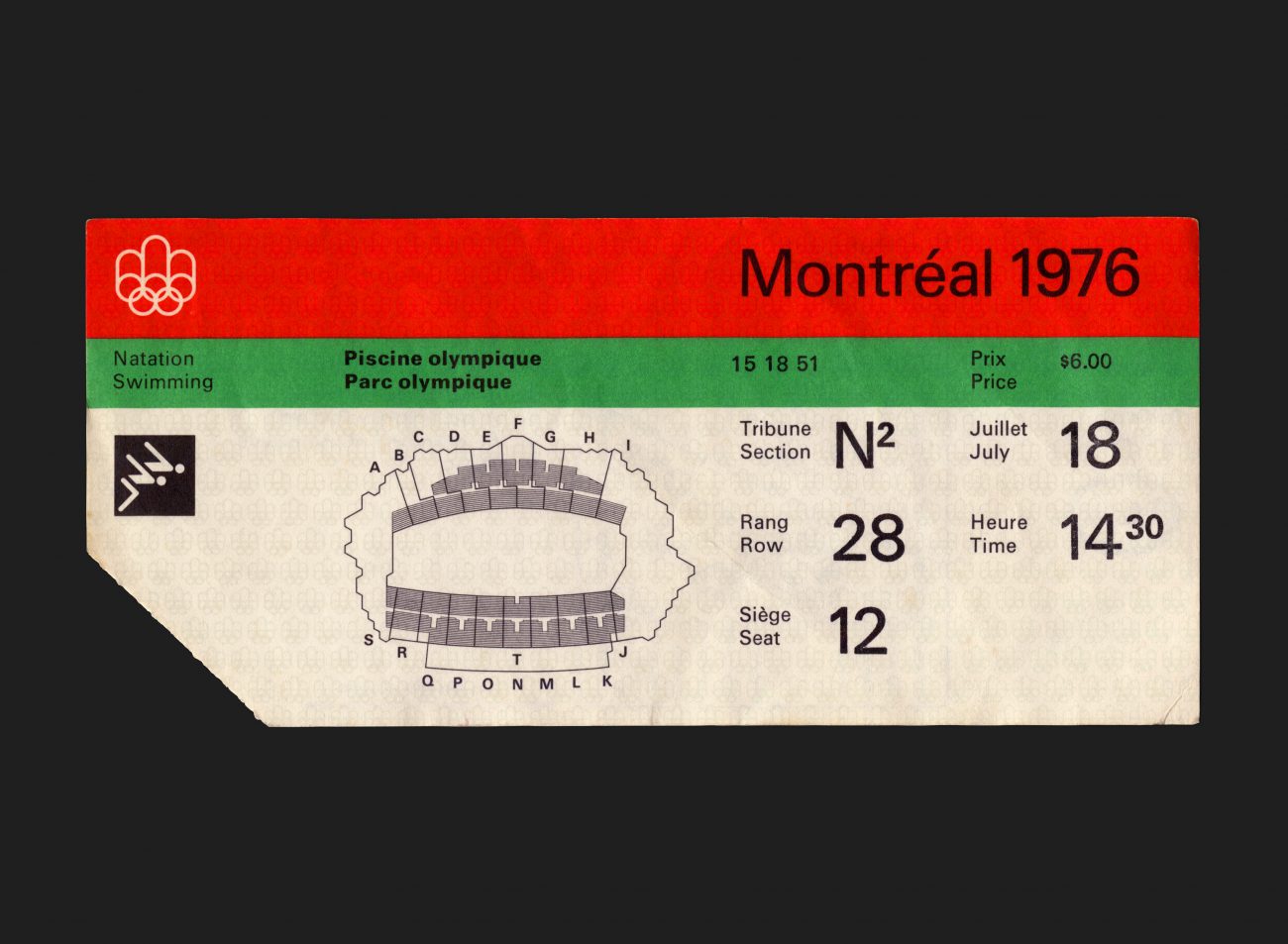Comment
On June 7th, 1976 tickets for the Montréal Summer Olympic Games officially went on sale in Canada. Tickets were sold (in Canada) through the official sales agency in Montréal, but also exclusively through the Eaton’s department store network, and had to be purchased in person (no phone or mail orders) and could be charged to Eaton customer accounts or paid in cash only. The proportion of tickets sold to Canadian residents totalled 48% (around 2,310,514). The tickets were printed in Canada by D. English Co.
From the Montréal 1976 Official Reports (Book 1, page 521/523):
Ticket Design and Printing 1976
The prestige attached to the Olympics contributed much to the design of the tickets used for the Montréal Games. Everything seemed to point to the grandeur of the event: the way the design was executed, the shape, the colors, and the graphics in general. They were obviously meant to be retained as souvenirs. But their prime purpose was to make for easier control at the tickets and, by the same token, to allow people to get to their seats quickly.
The front of each ticket was printed in three colors with a red stripe, above which was the official emblem of the Montréal Games; under this stripe the color varied according to the competition site whose numerical symbol was displayed. On the lower part, against a grey background, were the sport pictogram and a miniature plan of the competition site. The necessary alphanumerical symbols were printed in black.
On the reverse side, there was a stylized plan of the region showing the general area of the competition site, with the remaining part of the ticket reserved for the commercial message of one of the official sponsors of the Games.
Several precautions were taken against counterfeiting, falsification, and theft. First of all, the tickets were printed on white water-marked paper specially made for COJO. The data on the ticket that remained unchanged was lithographed, while variable information was printed by letterpress. The final stage of production could thus be delayed as long as possible, and lastminute changes could be made, for example, where the number of available seats was in doubt at any one site. The issue of tickets could, therefore, be programmed to tie in with scheduled distribution.
The upper left-hand corner was perforated diagonally so that it could be detached upon admission, and this feature was particularly suited for those sites equipped with turnstiles. Any ticket so mutilated could not be used again.
The company that printed the tickets was known for its honesty and integrity. Nevertheless, its employees had to undergo the same Royal Canadian Mounted Police (RCMP) security clearance as COJO personnel. In addition, special devices were installed to keep the printing plant under observation.
Ticket Coding and Numbering
All tickets carried a numerical symbol where the first two digits (from 00 to 22) indicated the sports competition or the event. The third and fourth revealed the competition date, while the fifth (with certain exceptions) designated the time of day: the numbers 1, 2, and 3 meaning morning, afternoon, and evening respectively. The final digit denoted the seat (or standing room, if applicable), and thereby the price. The number 1 meant the most expensive seats, and the last number in each series up to six meant the lowest price seats.
For example, the ticket shown here, numbered 1518 51 should be interpreted as follows:
15 : Swimming
18 : July 18, 1976
5 : Certain exceptions applies here
1 : First class seat
This coding system was found most useful for the handling and control of all tickets both before and during the Games.
All Archives
Go Back






